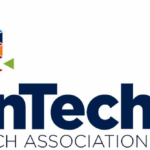It is hard to come up with innovations and that’s why they are called innovations because of the uniqueness of these ideas. When we streamline such innovations to the tech sector, it even becomes difficult to innovate and spread that innovation to a large group of people for innovation. Tech innovations no matter how interesting still depend on adoption for success measurement. While there have been many over the years, the success of the smartphone era, social media and recently AI have proved that when technology is adopted, it can create a whole new set of industries that will empower people economically. While AI is yet to hit mainstream usage, the success story over the past year has been phenomenal with bolder predictions ahead for the AI sub-sector. While there have been many ideas put out there, not every revolutionary idea that emerges under the spotlight manages to make it into our everyday world. Let’s embark on a journey through several hyped technologies that held immense promise but somehow fell short of becoming household names not because they weren’t useful but sometimes because they could not just hit mainstream usage. We’ll explore why they struggled to gain widespread adoption, check in on where they stand today, and peek into the potential they still hold for our future.
1. Hyperloop: The Supersonic Dream

The Hyperloop once captivated our imaginations with its promise of zipping us at breathtaking speeds of 700 mph across vast distances. First envisioned by Elon Musk in 2013, this futuristic transportation system aimed to revolutionize how we move. However, despite early excitement and several test runs, the Hyperloop remains stuck in the experimental phase. Regulatory roadblocks, astronomical costs, safety concerns, and feasibility challenges have stalled its journey towards becoming an everyday mode of transport. A few US cities like California considered it, the city of Dubai and the nation of India at a time also took serious looks at the idea but nothing has been heard regarding a serious investment towards it.
Current Status: Prototypes exist, but a commercially viable Hyperloop system is yet to materialize.
Future Potential: To realize its transformative potential, the Hyperloop needs substantial investments, regulatory changes, and technological advancements.
2. Virtual Reality (VR): The Gateway to Immersive Worlds

VR technology promised us the gateway to immersive experiences in gaming, entertainment, education, and more. Yet, the anticipated explosion of VR headsets in homes never quite happened. Factors like high costs, limited content, bulky hardware, motion sickness issues, and a lack of compelling applications have slowed its journey into mainstream use.
Current Status: VR remains popular in certain niche markets like gaming and specialized training but hasn’t become a household staple.
Future Potential: With technological advancements and affordability improvements, VR might still unlock its potential in entertainment, education, and other realms.
3. Metaverse: Building the Digital Universe

The concept of the Metaverse, a shared virtual space for social interaction, seemed like a distant yet exciting reality. However, efforts to create a cohesive, accessible virtual universe have faced hurdles like platform incompatibility, privacy worries, and a lack of standardized protocols.
Current Status: Fragmented implementations exist across various platforms, but a unified Metaverse experience remains elusive.
Future Potential: Advancements in AR, virtual worlds, and blockchain might pave the way for a unified Metaverse, but collaboration and tech advancements are vital.
4. Self-Driving Cars: The Road Ahead with Autonomous Vehicles

Self-driving cars were poised to revolutionize transportation, promising safer roads, reduced accidents, and enhanced mobility. However, hurdles like safety concerns, complex regulatory frameworks, public trust issues following accidents, and the intricacies of real-world driving scenarios have slowed their widespread adoption.
Current Status: Autonomous vehicles exist in limited trials and testing phases, primarily in controlled environments. Large-scale deployment faces regulatory, technological, and societal challenges.
Future Potential: Advancements in AI, sensor technology, and regulatory frameworks may pave the way for safer and more accepted self-driving cars, transforming transportation as we know it.
5. Smart Glasses: Bridging the Gap Between Vision and Technology

Smart glasses, envisioned as seamless tech integrating digital information with our everyday vision, faced difficulties in user acceptance, design limitations, and privacy concerns. The technological challenge of achieving an unobtrusive yet functional form factor hindered their widespread appeal.
Current Status: Smart glasses exist in specialized niches like enterprise applications and certain augmented reality experiences but have yet to penetrate mainstream consumer markets.
Future Potential: As miniaturization and user-friendliness improve, smart glasses might find broader applications in areas like healthcare, manufacturing, and consumer tech, but design and social acceptance remain critical.
6. 3D Printing: Shaping the Future of Manufacturing

The promise of 3D printing to revolutionize manufacturing and enable personalized production faced challenges in scalability, material limitations, speed, and cost-effectiveness. While the technology has advanced significantly, it’s still not ubiquitous due to these constraints.
Current Status: 3D printing has found use in prototyping, niche manufacturing, healthcare (prosthetics), and aerospace, but widespread adoption in traditional manufacturing remains limited.
Future Potential: Advances in materials, speed, and scalability could see 3D printing integrated into mainstream manufacturing, offering customization and efficiency, but cost-effectiveness remains a key challenge.
7. Blockchain Applications: The Quest for Decentralized Systems

Blockchain technology promised decentralized, secure systems for transactions, contracts, and data management. However, challenges in scalability, energy consumption, regulatory uncertainty, and public perception hampered its rapid adoption in various industries.
Current Status: Blockchain is primarily associated with cryptocurrencies and limited applications in supply chain, finance, and digital assets. Full-scale integration into mainstream systems faces scalability and regulatory hurdles.
Future Potential: As scalability solutions and regulatory clarity emerge, blockchain may revolutionize sectors like finance, healthcare, and logistics, but technological advancements and regulatory acceptance are essential.
The path from groundbreaking innovation to everyday usability isn’t always smooth. Despite these technologies falling short of reaching their full potential, advancements and efforts persist. Overcoming challenges might open doors to a future where these innovations reshape our daily lives.
Discover more from TechBooky
Subscribe to get the latest posts sent to your email.







